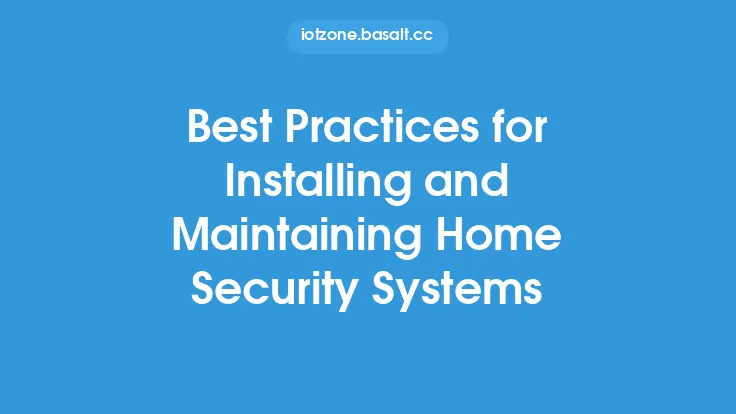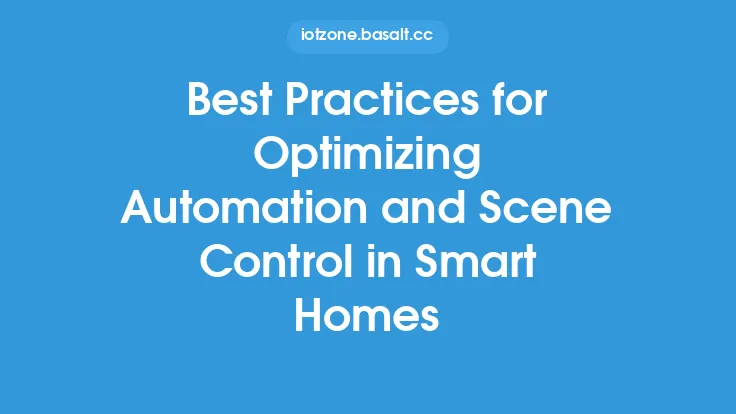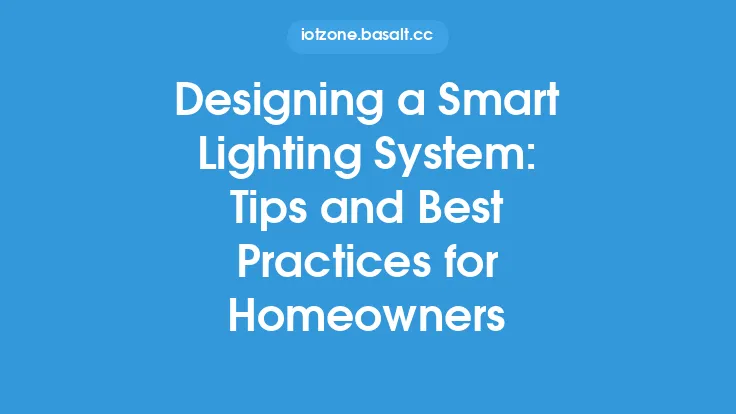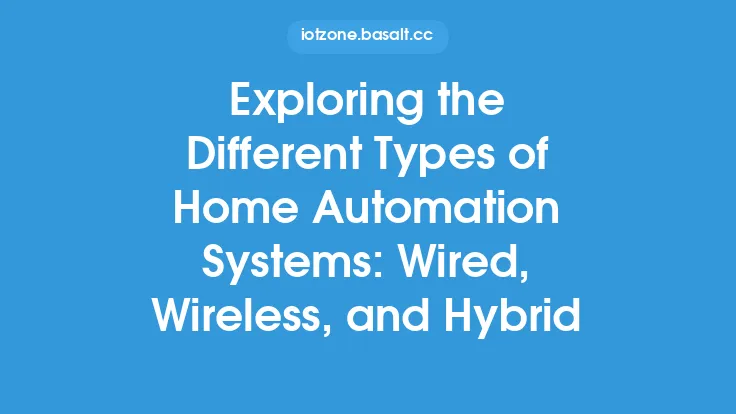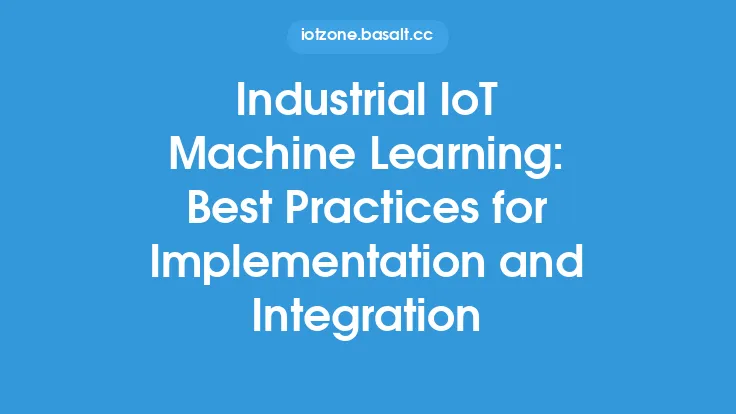When it comes to installing and maintaining home automation systems, there are several best practices to keep in mind to ensure a seamless and efficient experience. A well-designed and properly installed system can provide numerous benefits, including increased convenience, energy efficiency, and enhanced security. However, a poorly installed or maintained system can lead to frustration, wasted resources, and even safety hazards. In this article, we will delve into the key considerations and best practices for installing and maintaining home automation systems, providing you with the knowledge and expertise to get the most out of your investment.
Planning and Design
Before installing a home automation system, it is essential to plan and design the system carefully. This involves assessing your needs and goals, determining the scope of the project, and selecting the right components and technologies. Start by identifying the areas of your home that you want to automate, such as lighting, temperature, security, and entertainment. Consider your lifestyle, preferences, and habits to determine the level of automation and control you require. It is also crucial to evaluate your home's infrastructure, including the electrical and networking systems, to ensure they can support the automation system. A well-planned and designed system will not only ensure a smooth installation process but also provide a solid foundation for future upgrades and expansions.
Installation
The installation of a home automation system requires careful attention to detail and a thorough understanding of the underlying technologies. It is recommended to hire a professional installer who has experience with home automation systems, as they can ensure that the system is installed correctly and safely. During the installation process, it is essential to follow the manufacturer's instructions and guidelines, as well as local building codes and regulations. The installer should also test the system thoroughly to ensure that it is functioning as intended and make any necessary adjustments. Additionally, it is crucial to label and document the system's components, wiring, and configuration to facilitate future maintenance and troubleshooting.
Configuration and Programming
Once the system is installed, it needs to be configured and programmed to meet your specific needs and preferences. This involves setting up the system's software and firmware, configuring the devices and sensors, and creating custom scenes and automation rules. The configuration and programming process can be complex and time-consuming, requiring a deep understanding of the system's architecture and programming languages. It is recommended to work with a professional programmer or installer who can help you configure the system and create custom automation scenarios. They can also provide training and support to ensure that you can use the system effectively and make any necessary changes or adjustments.
Maintenance and Troubleshooting
Regular maintenance and troubleshooting are essential to ensure that your home automation system continues to function correctly and efficiently. This involves monitoring the system's performance, updating the software and firmware, and performing routine checks and tests. It is also crucial to keep the system's documentation and configuration files up to date, as well as to maintain a record of any changes or modifications made to the system. In the event of a problem or issue, it is essential to troubleshoot the system methodically, using tools and techniques such as network analysis and device debugging. By identifying and addressing problems promptly, you can prevent downtime, reduce maintenance costs, and ensure that your system continues to provide the benefits and convenience you expect.
Security and Access Control
Home automation systems can be vulnerable to security threats, such as hacking and unauthorized access. To mitigate these risks, it is essential to implement robust security measures, including encryption, firewalls, and access control. This involves securing the system's network and devices, using strong passwords and authentication protocols, and limiting access to authorized personnel. It is also crucial to keep the system's software and firmware up to date, as well as to monitor the system for any suspicious activity or anomalies. By prioritizing security and access control, you can protect your system and your personal data, ensuring a safe and secure automation experience.
Upgrades and Expansions
As home automation technologies continue to evolve, it is essential to plan for future upgrades and expansions. This involves selecting components and systems that are scalable and flexible, as well as designing the system with future-proofing in mind. When upgrading or expanding your system, it is crucial to assess your current needs and goals, as well as to evaluate the latest technologies and trends. This may involve adding new devices or sensors, upgrading the system's software or firmware, or integrating the system with other smart devices or systems. By planning for future upgrades and expansions, you can ensure that your system remains relevant and effective, providing a solid foundation for your evolving automation needs.
Conclusion
Installing and maintaining a home automation system requires careful planning, attention to detail, and a thorough understanding of the underlying technologies. By following best practices and considering key factors such as planning and design, installation, configuration and programming, maintenance and troubleshooting, security and access control, and upgrades and expansions, you can ensure a seamless and efficient automation experience. Whether you are a homeowner, installer, or integrator, this article has provided you with the knowledge and expertise to get the most out of your home automation system, enabling you to enjoy the benefits of convenience, energy efficiency, and enhanced security that these systems have to offer.
